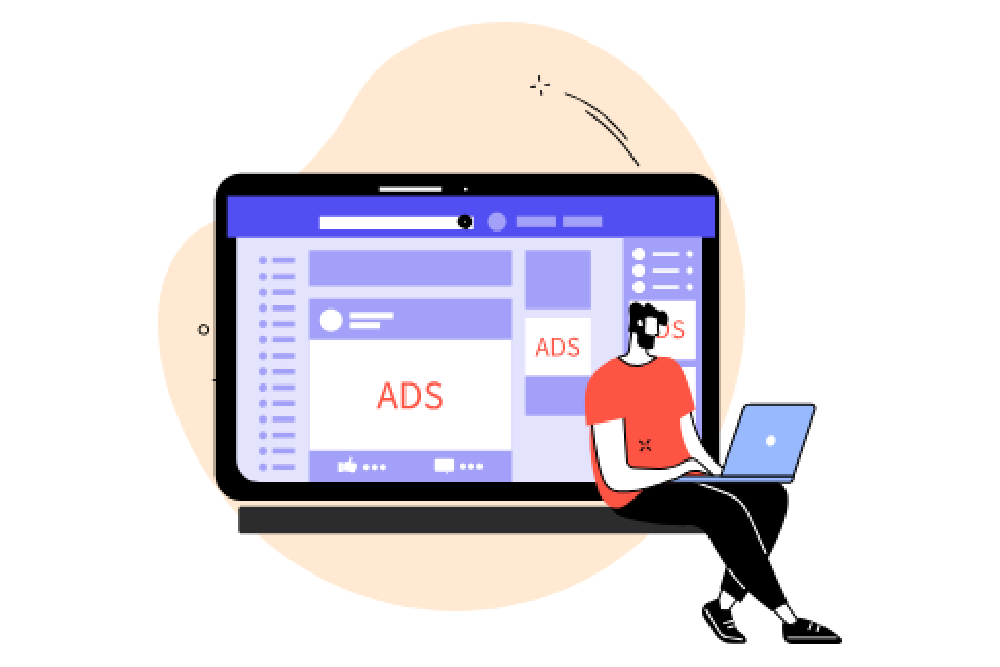In today's digital age, a Facebook page is more than just a social media placeholder. It's a dynamic business platform that, when used strategically, can turn casual clicks into devoted customers. With more than 2.8 billion monthly active users, Facebook ads agency has become a powerhouse for targeted advertising, allowing businesses to reach their ideal audiences with laser precision.
The Art of Crafting a Compelling Facebook Ad
Creating an effective Facebook ad is more than just selecting a good image and writing catchy text. It's an art that involves a deep understanding of your audience's psychology and the current market trends. Here's your step-by-step guide to crafting a killer Facebook ad:
Know Your Audience Inside and Out
Before you upload a single ad image, spend time undercover. Research who's clicking, why, and what happens thereafter. Facebook's data mining capabilities give you invaluable insights into demographics, interests, and behaviors. Use this information to mold your ad's message and offer.
A Picture Paints a Thousand Words, But a Video Speaks Volumes
Facebook loves video content, and so should you! Videos have a much higher engagement rate than images, and they allow you to tell a story or showcase product features dynamically. Ensure your videos are high-quality, succinct, and capable of capturing attention within the first few seconds.

Copy That Captivates
In a feed inundated with content, your ad copy must cut through the noise. Make it clear, persuasive, and personalized. Use action verbs to encourage clicks and clearly articulate why your audience needs your product or service.
Call to Action (CTA)
The power of persuasion culminates in a strong CTA. Whether it's "Shop Now," "Learn More," or "Sign Up," ensure your CTA aligns with your conversion goal and is prominent in your ad.
Navigating Facebook's Ad System
Understanding Facebook's ad system is a crucial part of honing your advertising strategy. There are several elements to consider when setting up your ad campaign on Facebook:
Campaign Objective
Start by selecting the objective that aligns with your marketing goals — be it brand awareness, conversions, or lead generation. This will determine how your ad is optimized and who it's shown to.
Ad Set Targeting
Focus on your audience. Choose location, age, gender, and language, and then get specific with detailed targeting based on interests, behaviors, and demographics.
Budget and Schedule
Decide how much you want to spend and over what period. Facebook offers various bidding strategies, so make sure to pick the one that works best for your advertising goal.
Analyzing and Optimizing Your Campaigns
After launching your ad, the work doesn't stop. To ensure you're making the most out of your investment, you need to continually analyze and optimize your campaigns:
Monitor Key Metrics
Keep an eye on your ad's performance by monitoring key metrics such as click-through rate (CTR), conversion rate, and return on ad spend (ROAS). This will help you identify what's working and what's not.
A/B Testing
Experiment with different ad elements like images, copy, and CTAs to see which combination yields the best results. A/B testing is a powerful tool for ongoing optimization.
Refine Your Targeting
Use the data from your campaigns to tweak your audience targeting, ensuring you're reaching the right people at the right time with the right message.
Investing in Facebook advertising is a savvy move in the digital age, but it's an investment that requires strategic thinking and ongoing commitment. By understanding the nuances of Facebook ads and utilizing the platform's robust features, you can turn those clicks into loyal customers who keep coming back for more. Remember, the key to success lies in continuous refinement and a commitment to understanding and serving your audience better with every ad you run.